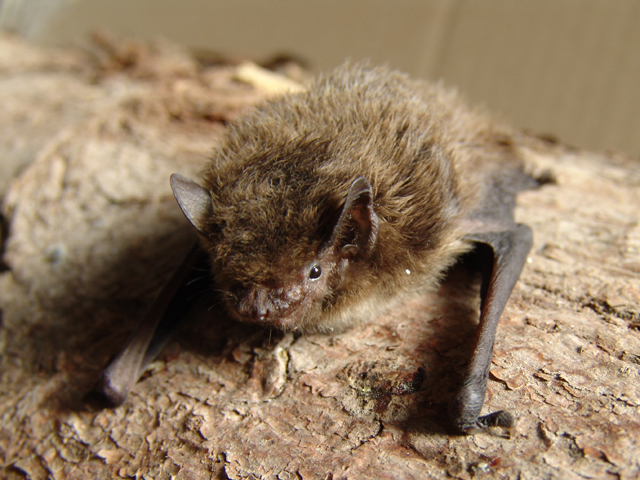
New monitoring technique reveals endangered animals
Now biologists can get much more accurate information about endangered bats, birds and insects. A new recording system, developed at the University of Southern Denmark, has revealed many previously unknown and highly valuable details about bats.
 Gone are the days when biologists had to sit in tents for several days with binoculars and infrared cameras in order to register endangered animals. A new monitoring system, which for two months has continuously recorded bat activity on the roof of a garage at the University of Southern Denmark has proven so effective that it has revealed two bat species that scientists did not believe lived in the area.
Gone are the days when biologists had to sit in tents for several days with binoculars and infrared cameras in order to register endangered animals. A new monitoring system, which for two months has continuously recorded bat activity on the roof of a garage at the University of Southern Denmark has proven so effective that it has revealed two bat species that scientists did not believe lived in the area.
- A growing concern about endangered species has created a need for a system to effectively monitor the endangered animals. Bats are endangered, and they live right here in our backyard at the university. Also the university is about to undergo major construction work, which will triple the number of buildings in the area. It is an obviously good idea to monitor how this will affects our bats, explains Professor John Hallam from Maersk Mc-Kinney Moller Institute University of Southern Denmark.
The researchers placed the new recording equipment about five meters above the ground on top of a garage building where bats often fly by.
- We got two months of continuous recording from the site. It would be impossible for one person to sort the recordings, but the automatic processing of recordings identified 115,000 bat sounds. Using the automatic processing, we end up with only a small part of recordings in need of humane processing, explains John Hallam.
This is the first recording system, which can monitor a range of insects, birds and bats effectively. And it can have major implications for how effectively biologists in the future determine the range of animal species.
According to the bat expert, Professor at Department of Biology at the University of Southern Denmark, Annemarie Surlykke, the recording equipment on the garage has already revealed several interesting things:
- We have recorded the sounds of two bat species right here at the university, one of which has only been observed once, and the other has never been recorded in this area. It is very interesting that we - with continuous monitoring - have found species that are often overlooked in most studies.
The two species are Nathusius' pipistrelle (Pipistrellus nathusii) and the pond bat (Myotis dasycneme). Nathusius´pipistrelle likes older deciduous forests, where they spend the summers in hollow trees, bird boxes, etc. The Danish pond bats are often found around limestone caves in Jutland, where they spend the winters. They only rarely fly farther than 100 km from their winter caves. In summer some populations move to the islands of Lolland and Falster, and it is perhaps members of these populations which have now been recorded in the forests around the University of Southern Denmark, which lies between the two places.
Another surprise to Annemarie Surlykke was that bats quite often fly in the rain. The monitoring system registered a surprising number of bat calls around the end of a rainfall.
- Among biologists it's a widely held belief that bats do not fly when it rains, says Annemarie Surlykke and she continues:
- But that may be due to the way we monitor. The mere assumption that there are better chances of detecting bats in good weather has made us monitor in good weather, so it becomes a self-fulfilling prophecy. Therefore, the continuous recording gives us a better picture of how bat activity is correlated with the weather.
Further, the monitoring revealed that bat’s night activity slows down when the weather is clear and cool. On the opposite, activity increases when the night's weather is cloudy and warmer.
- We were also surprised that many bat calls were social calls and not orientation calls. Bats orient themselves by echolocation: they send out calls and receive their echoes from the surroundings. Orientation calls are vital for bats, but we registered more social calls”, says Annemarie Surlykke.
Surlykke and Hallam would like to do a long-term monitoring of bats in the area around their university, where the building of a new super hospital is planned to start in 2015.
- There is much attention to restoration projects, but what about the opposite? What happens when nature is involved in construction work? Is it possible to build "green"? And does it work? We would like to follow the wildlife before, during and after such a major construction project, and we can use the new technology and the area's bat for this, the two scientists say.
Photo of Pipistrelle nathusii: Mnolf.
Ref: Andreassen, Surlykke and Hallam: Semi-automatic long-term acoustic surveying: A case study with bats. Ecological Informatics, accepted 11 December 2013.
Contact
Professor Annemarie Surlykke: Email: ams@biology.sdu.dk. Phone: +45 6550 2608.
Professor John Hallam: Email: john@mmmi.sdu.dk. Phone+45 6550 3546.